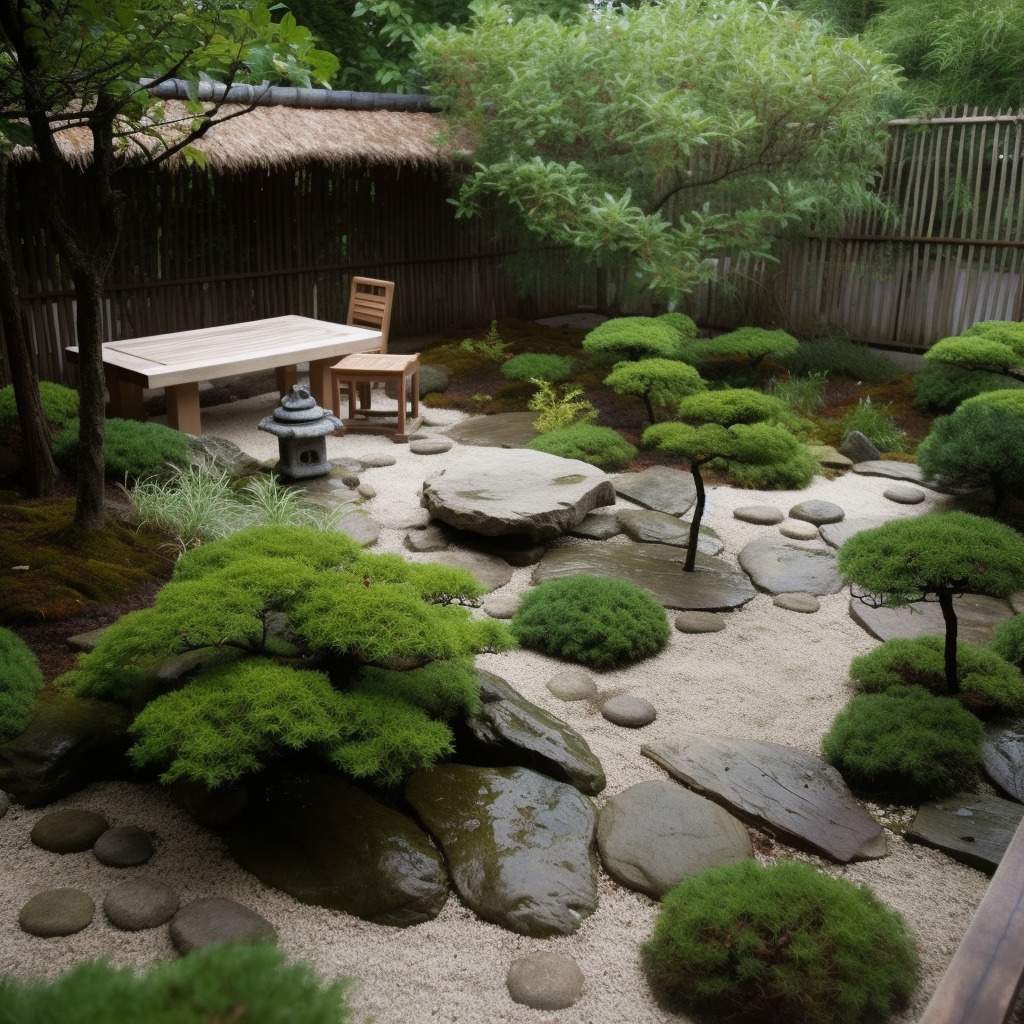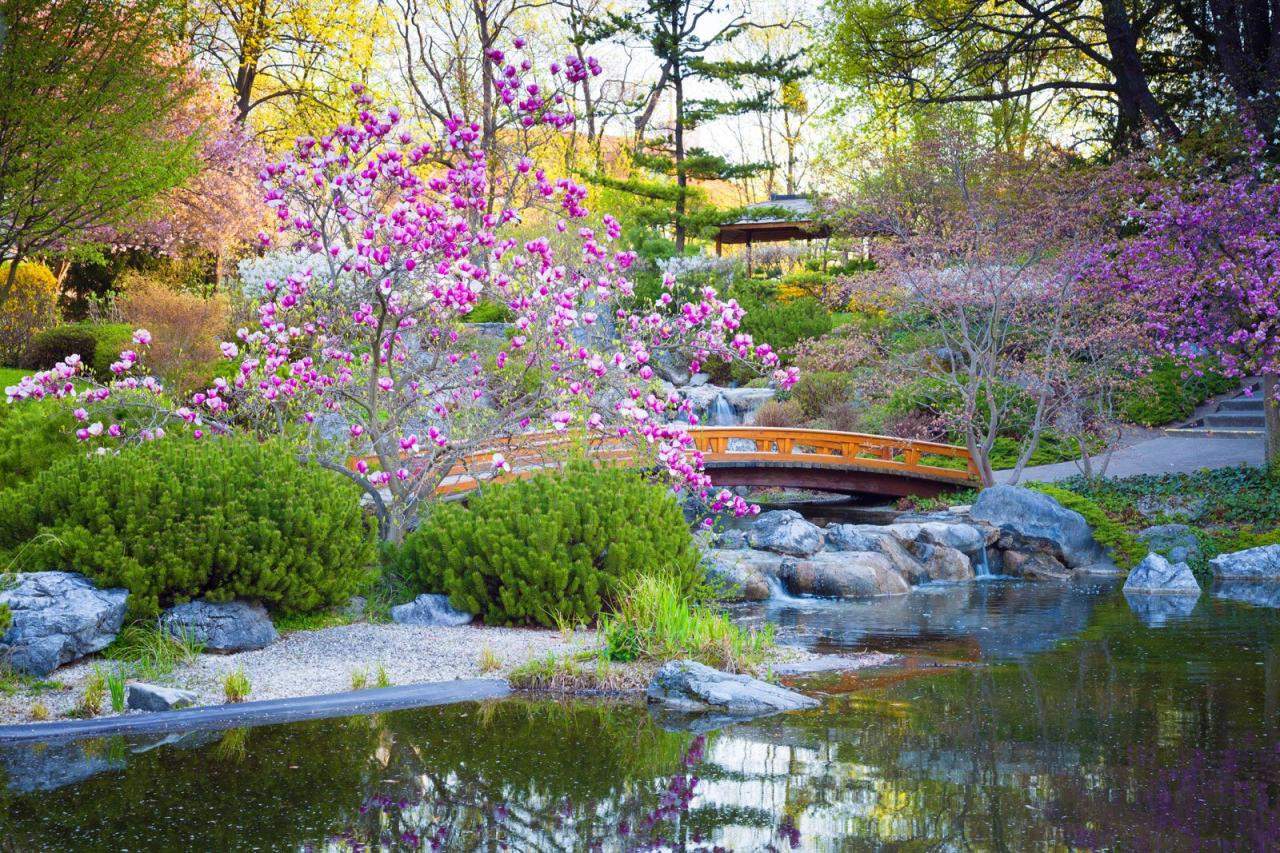8 Best Plants for a Beautiful Zen Garden introduces the perfect selection of plant species that embody tranquility and aesthetics in a Zen garden. From choosing the right plants to enhancing the sensory experience, this guide will help you create a serene outdoor oasis.
Selecting the Right Plants

Choosing the perfect plants for your Zen garden is crucial in creating a serene and tranquil outdoor space. Here are eight plant species that are ideal for a Zen garden:
1. Bamboo
- Bamboo is a staple in Zen gardens due to its graceful and peaceful appearance.
- The sound of bamboo rustling in the wind can promote relaxation and calmness.
2. Japanese Maple
- The Japanese Maple’s vibrant foliage adds a pop of color to the garden while symbolizing peace and harmony.
- The tree’s unique shape and texture create a sense of tranquility.
3. Moss
- Moss is a low-maintenance ground cover that adds a lush green carpet to the garden.
- Its soft texture and vibrant green color evoke a sense of peace and simplicity.
4. Cherry Blossom Tree
- Cherry blossoms are renowned for their beauty and ephemeral nature, symbolizing the transient beauty of life.
- The delicate flowers create a calming and serene atmosphere in the garden.
5. Lavender
- Lavender’s soothing fragrance promotes relaxation and stress relief.
- The plant’s purple blooms add color and beauty to the garden while attracting pollinators.
6. Zen Grass
- Zen Grass, such as Japanese sedge or fountain grass, adds movement and texture to the garden.
- The ornamental grasses sway gently in the breeze, creating a sense of flow and tranquility.
7. Stones
- Incorporating stones or rocks in the garden symbolizes stability and grounding.
- Their presence encourages contemplation and mindfulness in a Zen garden.
8. Succulents
- Succulents are easy to care for and add a touch of greenery to the garden.
- Their unique shapes and patterns promote a sense of mindfulness and relaxation.
Designing the Layout
Creating a visually appealing layout in a Zen garden involves careful planning and consideration of symmetry, balance, and focal points. By arranging the selected plants thoughtfully, you can achieve a harmonious and peaceful atmosphere in your garden.
Significance of Symmetry and Balance
In a Zen garden, symmetry and balance play a crucial role in promoting a sense of tranquility and order. When arranging the plants, aim for a symmetrical layout to create a feeling of harmony and equilibrium. This can be achieved by placing plants of similar size, shape, and color on either side of a central axis. Balance is essential to ensure that no single element overpowers the others, resulting in a cohesive and visually pleasing design.
Creating a Focal Point
To enhance the beauty of your Zen garden, consider creating a focal point using one of the selected plants. This could be a striking specimen plant placed in the center of the garden or a group of plants arranged in a visually appealing pattern. By drawing attention to a specific area, you can add interest and depth to the overall design.
Remember to maintain balance around the focal point to avoid a cluttered or chaotic appearance.
Caring for Zen Garden Plants

When it comes to maintaining a Zen garden, taking care of the plants is crucial for creating a peaceful and harmonious space. Proper care ensures that the plants thrive and contribute to the overall tranquility of the garden.
Bamboo
- Water regularly to keep the soil moist, especially during hot and dry weather.
- Ensure the bamboo receives indirect sunlight to prevent scorching of the leaves.
- Prune any dead or yellowing leaves to maintain a clean and vibrant appearance.
Japanese Maple
- Water deeply but infrequently to promote deep root growth.
- Place in a location with partial shade to protect the delicate leaves from sunburn.
- Prune in late winter or early spring to control the shape and size of the tree.
Japanese Black Pine
- Water regularly but allow the soil to dry out slightly between waterings.
- Position in a sunny spot to encourage healthy growth and vibrant foliage.
- Prune in late winter or early spring to maintain the desired shape and density.
Japanese Forest Grass
- Keep the soil consistently moist, especially during the hot summer months.
- Place in a shaded area to prevent scorching of the delicate leaves.
- Trim back any brown or damaged foliage to promote new growth.
Rock Cotoneaster
- Water deeply but infrequently to prevent waterlogged soil.
- Position in full sun for optimal flowering and berry production.
- Prune after flowering to maintain a compact and tidy appearance.
Moss
- Keep the moss consistently moist by misting or light watering.
- Place in shaded areas to prevent drying out and browning of the moss.
- Gently rake or trim the moss to remove debris and maintain a lush green cover.
Cherry Blossom Tree
- Water regularly, especially during the flowering season, to support blooming.
- Plant in a sunny location to ensure proper growth and abundant blossoms.
- Prune after flowering to shape the tree and encourage new growth.
Lavender
- Water sparingly, letting the soil dry out between waterings to prevent root rot.
- Place in a sunny spot to promote flowering and strong fragrance.
- Prune after flowering to maintain a compact and bushy shape.
Incorporating Natural Elements

In a Zen garden, incorporating natural elements like rocks, stones, and water features is essential to create a harmonious and tranquil space that promotes relaxation and mindfulness.
Using Rocks and Stones
- Choose rocks and stones that complement the plants in your garden, creating a sense of balance and harmony.
- Arrange the rocks strategically to represent mountains, islands, or other natural formations, adding depth and texture to the garden.
- Use different sizes and shapes of rocks to create visual interest and flow within the space.
- Consider painting rocks with calming colors like gray, white, or black to enhance the Zen aesthetic.
Adding Water Features
- Integrating a fountain or small pond can introduce the element of water, symbolizing tranquility and movement in the garden.
- Position the water feature in a central location to serve as a focal point and enhance the overall ambiance of the space.
- Choose a design that complements the surrounding plants and natural elements, creating a seamless transition between the water feature and the rest of the garden.
- Maintain the water feature regularly to keep it clean and functioning properly, ensuring it remains a calming element in the garden.
Achieving Balance
- Ensure that the natural elements like rocks, stones, and water features are integrated harmoniously with the plant life in the garden.
- Aim for a balanced distribution of elements throughout the space, avoiding overcrowding or imbalance that may disrupt the Zen atmosphere.
- Use the principles of Feng Shui to guide the placement of natural elements, creating a sense of flow and harmony in the garden.
- Regularly assess and adjust the arrangement of rocks, stones, and water features to maintain equilibrium and serenity in the Zen garden.
Enhancing the Senses: 8 Best Plants For A Beautiful Zen Garden
When creating a Zen garden, one of the key elements to consider is how to engage the senses through plant selection and arrangement. Each plant species chosen can appeal to different senses like sight, touch, and smell, contributing to the overall tranquil atmosphere.
Sight
Plants like Japanese maple trees with their vibrant red leaves or delicate cherry blossoms can visually enhance a Zen garden. The contrast between different shades of green or the symmetry of carefully placed rocks and plants can also create a visually pleasing experience for visitors.
Touch
Incorporating plants with diverse textures such as soft moss, smooth pebbles, or rough bark can invite tactile exploration in a Zen garden. The sensation of running fingers through ornamental grasses or feeling the coolness of stones can add an interactive element to the space.
Smell, 8 Best Plants for a Beautiful Zen Garden
Fragrant plants like lavender, jasmine, or rosemary can infuse a Zen garden with soothing scents, promoting relaxation and mindfulness. The subtle aroma of these plants can evoke a sense of calmness and connection to nature, enhancing the sensory experience for those who visit the garden.
Importance of Texture and Color
The selection of plants based on their texture and color can significantly impact the sensory experience of a Zen garden. Combining plants with varying leaf shapes, sizes, and colors can create a harmonious balance that pleases the eye and adds depth to the overall design. The interplay of light and shadow on different plant surfaces can further enhance the visual appeal and tranquility of the space.
Concluding Remarks
In conclusion, by incorporating these top 8 plants into your Zen garden, you can transform your outdoor space into a peaceful retreat that nurtures the mind, body, and soul. Embrace the beauty of nature and the harmonious balance it brings to your surroundings.




